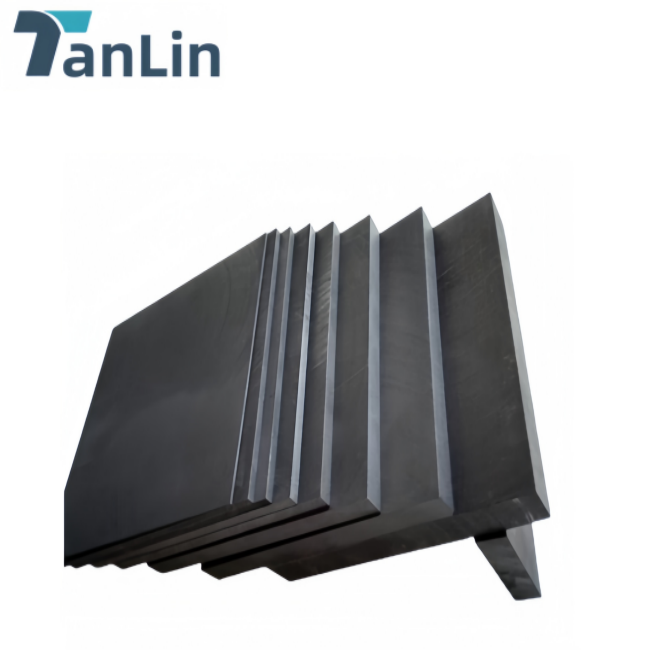Graphite Processing Parts
Graphite Processing Parts
Graphite block processing involves converting graphite raw materials through a series of process steps into graphite products with specific shapes, sizes and properties.
Graphite block processing usually includes raw material preparation, molding, sintering and subsequent treatment steps. In the raw material preparation stage, high-quality graphite raw materials need to be selected, and crushed, screened and mixed. In the molding stage, the graphite raw material is pressed into the desired shape of the graphite block through the mold. At the sintering stage, the particles in the graphite block are tightly combined at high temperature to form a dense graphite structure. The subsequent processing stage includes cutting, grinding and polishing of graphite blocks to meet the specific needs of customers.
Tanlin graphite material processing Ultra-high power, ultra-high performance electrode materials
Product Features
1.High strength and high rigidity: graphite block has high strength and high rigidity, can withstand greater mechanical stress and pressure, suitable for high-precision processing requirements.
- High temperature stability: graphite block remains stable at high temperature, not easy to deform or sintering, suitable for processing and use in high temperature environment.
- Good electrical and thermal conductivity: graphite block has good electrical and thermal conductivity, can efficiently transmit electrical energy and heat, suitable for occasions that need to conduct electricity or heat dissipation.
- Corrosion resistance and chemical stability: graphite block has good corrosion resistance and chemical stability at room temperature, and can resist the erosion of a variety of acids, alkalis and organic solvents.
- Easy to cut: graphite block is a soft material, easy to cut, can quickly produce the required products, and the processing process is not easy to crack or break.
Application scenario
First, steel smelting
Graphite blocks play an important role in steel smelting. It is often used as a furnace throat liner, can resist high temperature, corrosion resistance, and has good electrical and thermal conductivity. In the steelmaking process, graphite blocks can stably conduct electric currents and generate electric arcs, which can melt scrap iron or other raw materials in blast furnaces to produce steel and other metal products.
Second, electrochemical industry
In the electrochemical industry, graphite blocks are widely used in electroplating, electrolysis and other fields. Due to its good electrical conductivity and chemical stability, graphite blocks can be used as electrode materials to provide stable current transmission during electrochemical processes and ensure the smooth conduct of chemical reactions.
Third, non-ferrous metal smelting
Graphite blocks also play an important role in non-ferrous metal smelting. It can be used to manufacture electric furnace electrodes for smelting non-ferrous metals, which can withstand high temperature and strong corrosive environment to ensure the stability and reliability of the smelting process.
Chemical and mechanical manufacturing
In the field of chemical and mechanical manufacturing, graphite blocks are often used to make a variety of corrosion-resistant, high-temperature components and equipment. For example, it can be used as a lining material for chemical equipment to prevent the equipment from being eroded by corrosive media. At the same time, graphite blocks can also be used to manufacture mechanical parts, such as bearings, seals, etc., to improve the wear resistance and service life of equipment.


